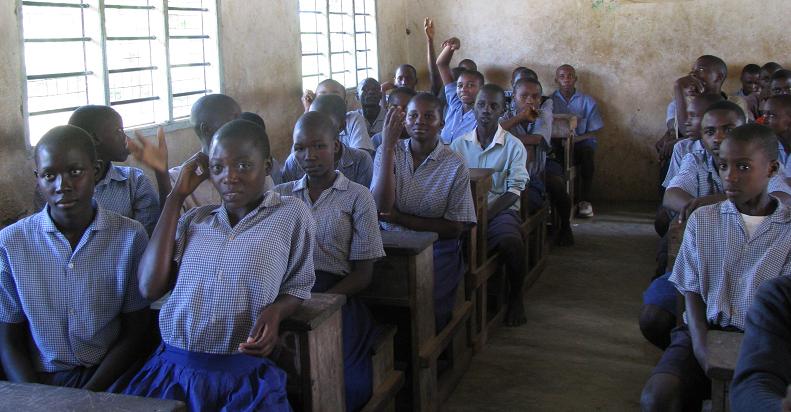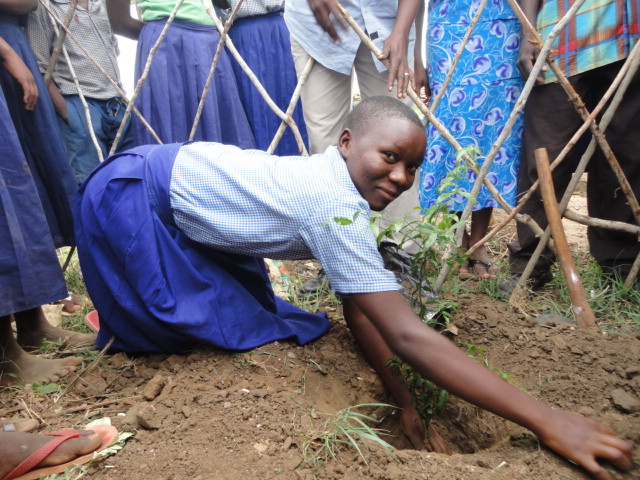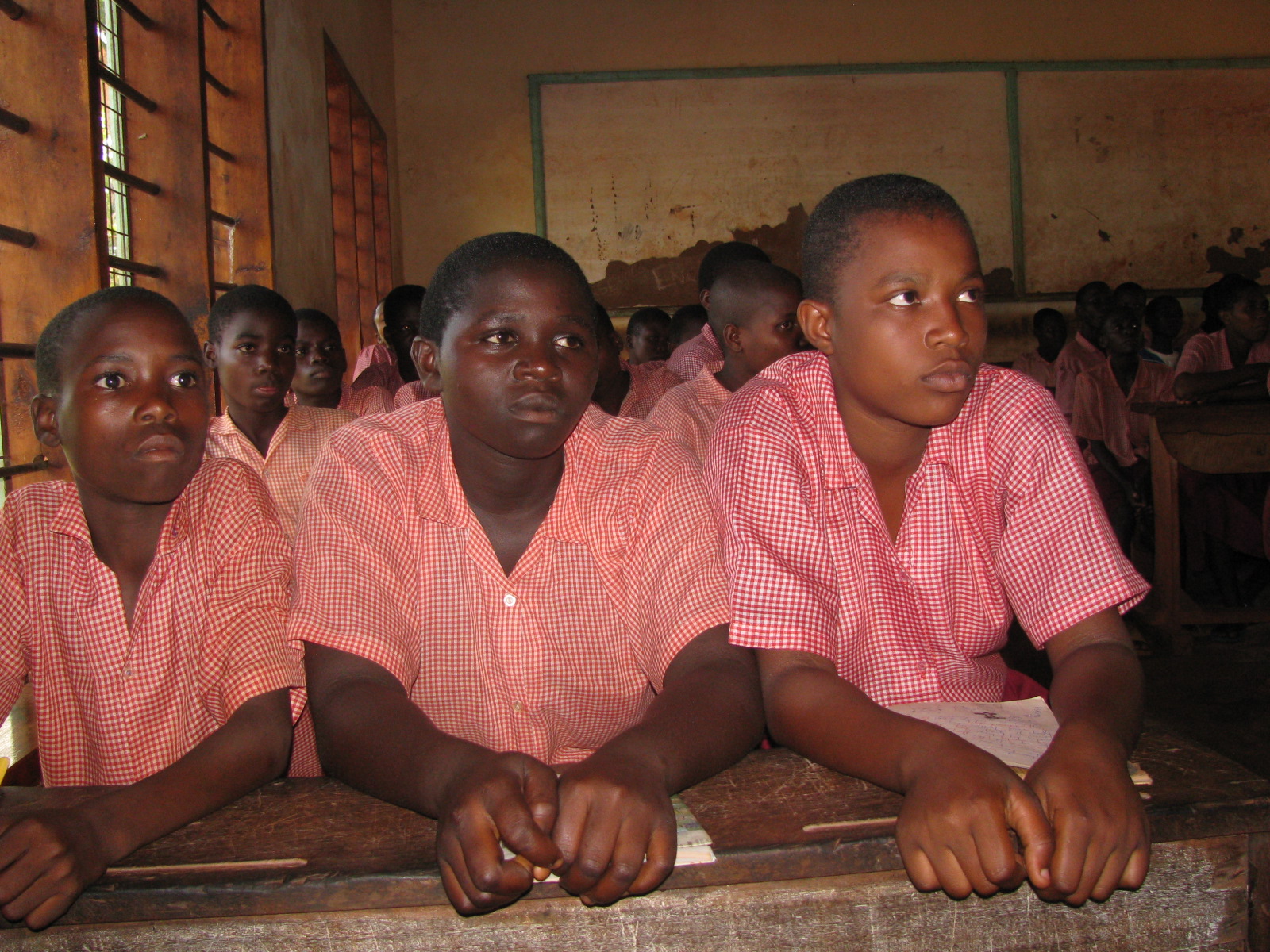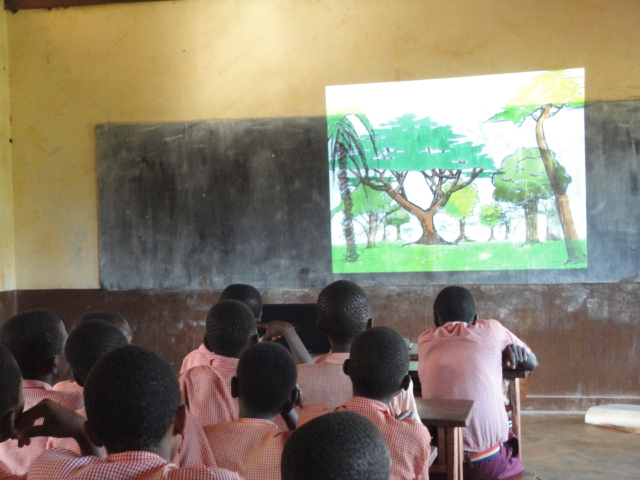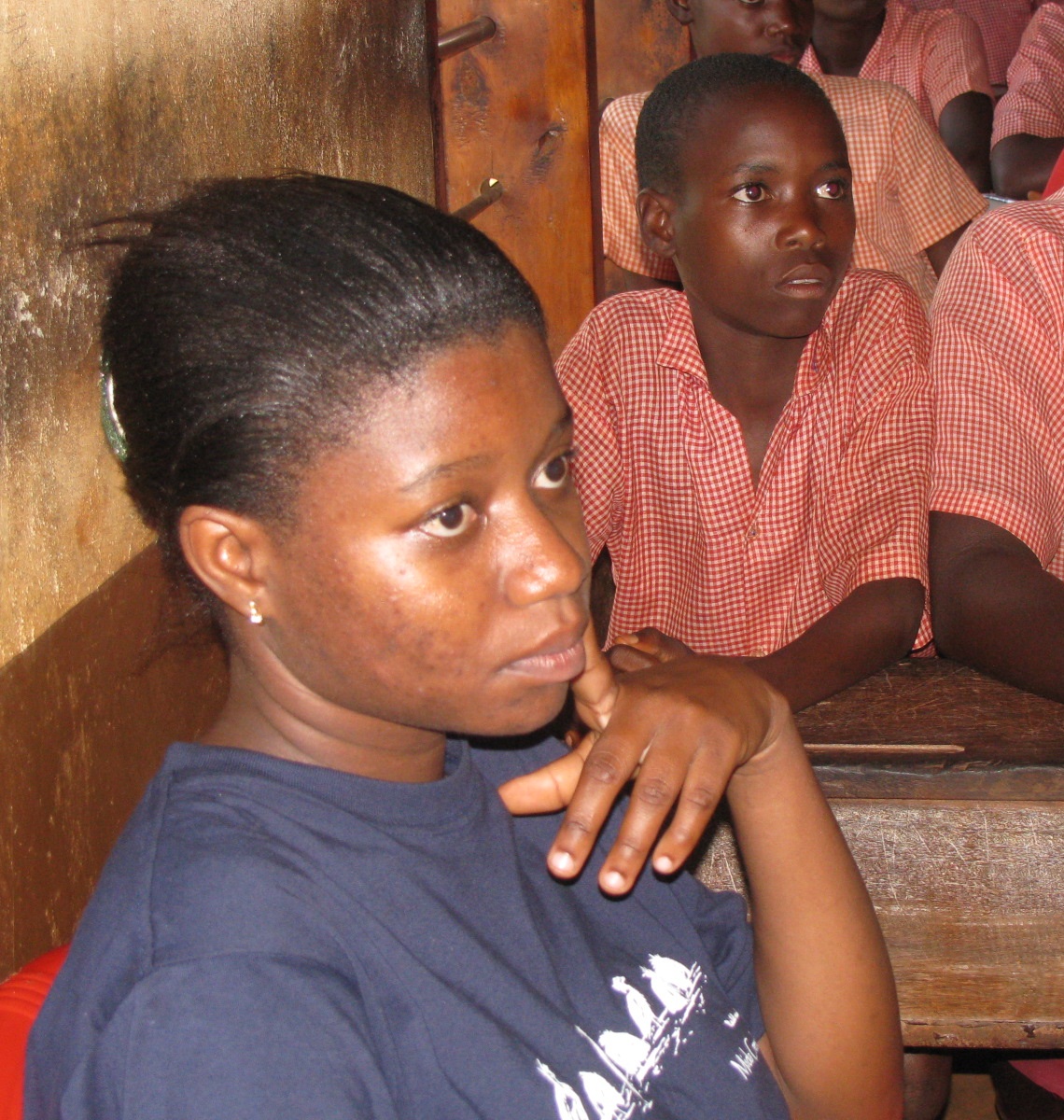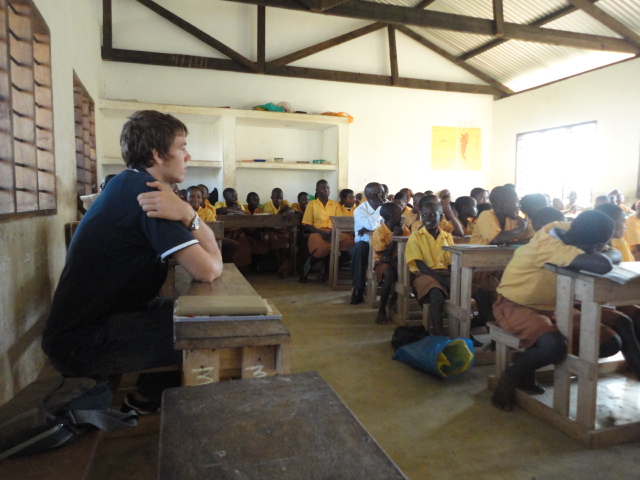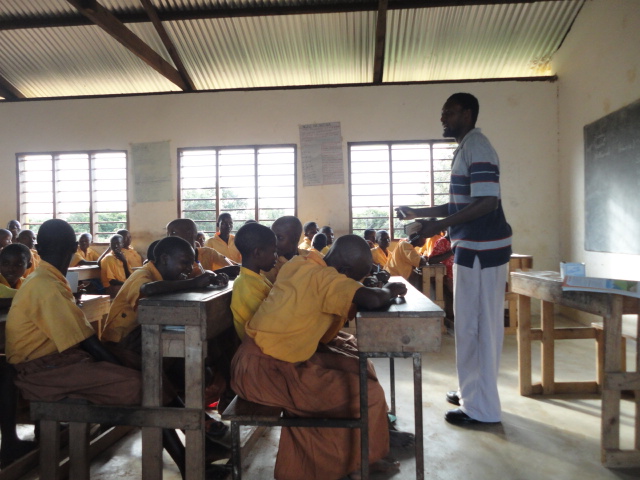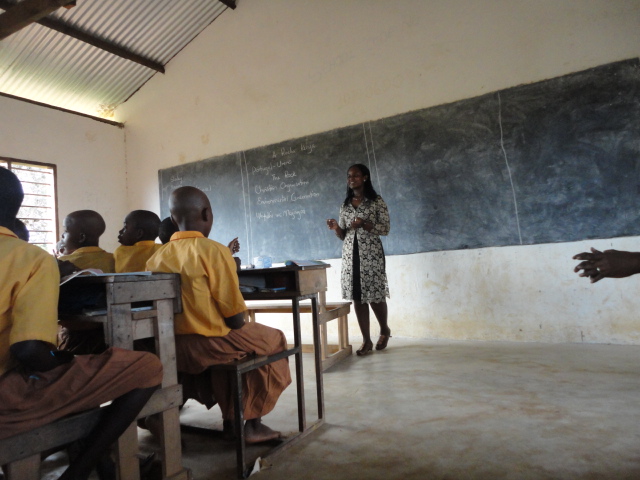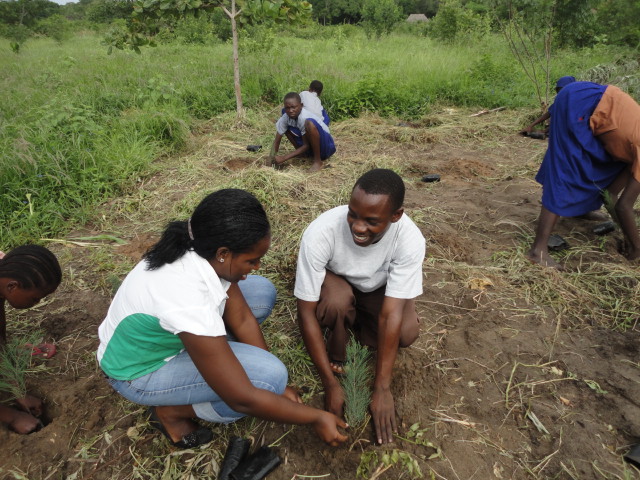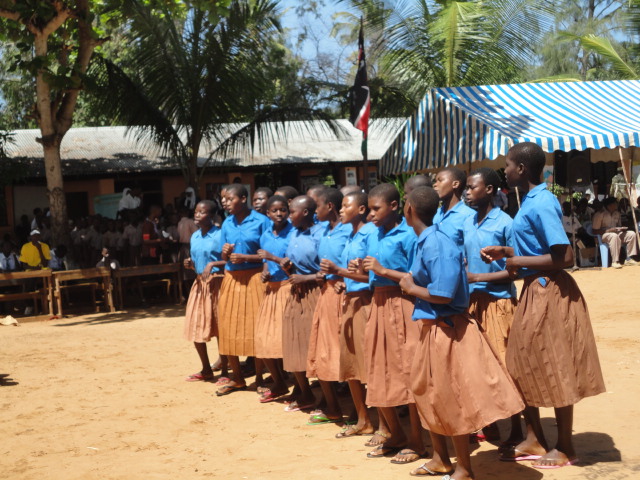School visits for Environmental Education have picked up very well, and this time the staff and volunteers of A Rocha Kenya were in Kahingoni Primary School. As usual the pupils were excited. They assembled in one class where we had our lesson which later on led to a very lively discussion. The lesson touched on the importance of conserving the forest and the endangered animals like the Golden-rumped sengi (elephant shrew), whose habitat is the Arabuko Sokoke Forest.
Pupils anwering questions during the lesson
A Rocha Kenya also donated some tree seedlings to the Wildlife Club of Kenya members in that school. The tree seedlings were of the Bombax rhodognaphalon (East African Bombax) commonly known as 'msufi mwitu' in Swahili and Balanites wilsoniana commonly known as 'mkonga' in Giriama which is the local language here. The trees were planted after the lesson by the pupils.They promised to take care of them by putting a small fence around each of them and watering them.
Mapenzi, a pupil planting one of the tree seedlings
We hope to get more funds to continue sustaining our program which involves a lot of traveling. Our goal is to educate all the schools surrounding the forest on the importance of conserving it since it is an important biodiversity area.
Naomi Wanjiru Gichungu- Environmental Education intern






